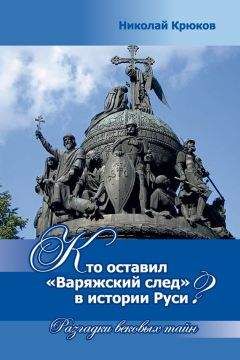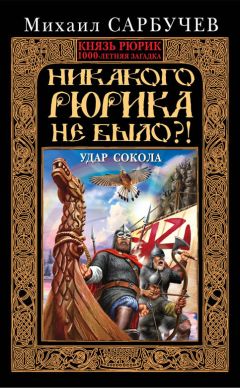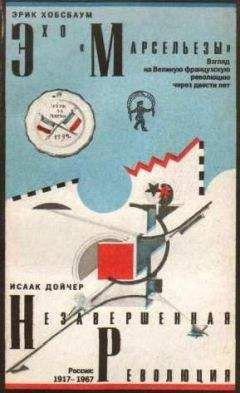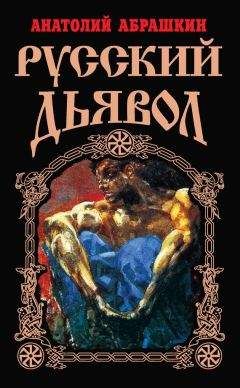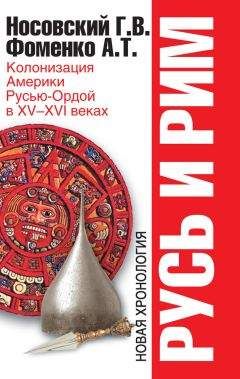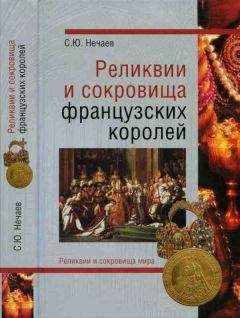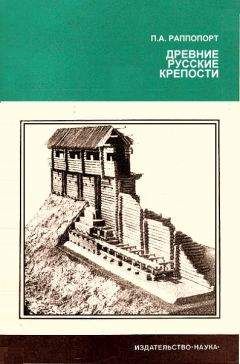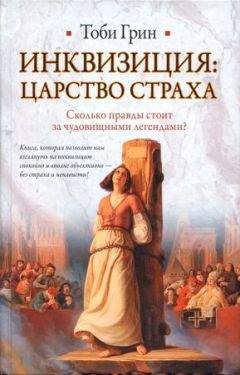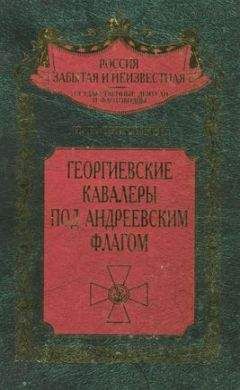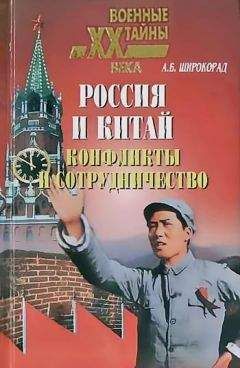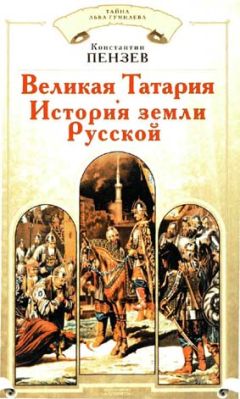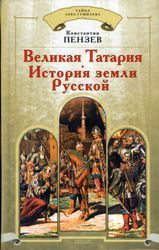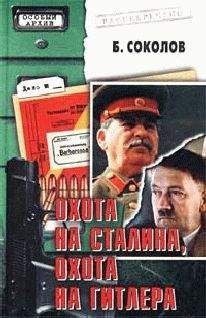Денис Абсентис - Злая корча. Книга 1. Невидимый огонь смерти

Скачивание начинается... Если скачивание не началось автоматически, пожалуйста нажмите на эту ссылку.
Жалоба
Напишите нам, и мы в срочном порядке примем меры.
Описание книги "Злая корча. Книга 1. Невидимый огонь смерти"
Описание и краткое содержание "Злая корча. Книга 1. Невидимый огонь смерти" читать бесплатно онлайн.
Связаны ли древние элевсинские мистерии с афинской чумой? Что именно помогло разбогатеть тамплиерам? Изображен ли демон на Изенхеймском алтаре? Спасал ли паломников путь святого Иакова или же был Дорогой Смерти? Какие «невидимые бесы» напали на Полоцк? Откуда взялись лютые крокодилы в русской летописи? Что делает загадочная ведьма на гравюре из трактата Молитора? Почему на Руси боялись росы святого Ферапонта? Инквизиторы верили, что ведьмы крадут половые члены и селят их в гнезда на деревьях, а отрывает члены лично дьявол. Считали ли русские скопцы, что члены, наоборот, отрывает сам Господь? С кем выходила на драку баба Яга? Чем объясняются эпидемии одержимости в монастырях в XVI–XVII вв? Что влияло на популярность галлюциногенной мандрагоры? Почему серьезная охота на ведьм и оборотней началась только в XVI веке? Что спровоцировало Великую Французскую революцию? Какую роль сыграл в этих и многих других событиях скромный грибок, из которого в XX веке был синтезирован знаменитый психоделик ЛСД?
47. Frey, Nancy Louise. Pilgrim stories: on and off the road to Santiago. University of California Press, 1998.
48. Fryde, E. B. Humanism and Renaissance historiography // Volume 21 of History series. 1983.
49. Fuller, John G. The day of st. Anthony’s fire. New York: The MacMillan Company, 1968.
50. Gabbai, Lisbonne and Pourquier. Ergot poisoning at Pont St. Esprit // Brit. Med. J 2 (15 sep), 1951, pp. 650–651.
51. Gibbons J. Recent Developments in the Study of The Great European Witch Hunt // The Pomegranate (5), 1998
52. Goff, Jacques Le. La civilisation de l’Occident médiéval. Arthaud, 1967.
53. Golden, Richard M. Encyclopedia of witchcraft: the Western tradition, Volume 1. ABC–CLIO, 2006.
54. Goldthwaite, Richard A. The economy of Renaissance Florence. 2009.
55. Gornitz, Vivien. Encyclopedia of paleoclimatology and ancient environments. Springer, 2009.
56. Gregorie de Tours. Histoire des Francs. Livres VII–X. A. Picard et fils, 1893.
57. Grieve M. A Modern Herbal. London, 1931.
58. Guerra, Francisco (md). Mexican Phantastica. Excerpta criminologica, Volume 7, Issues 4–6. Excerpta Criminologica Foundation, 1967.
59. Haeser, Heinrich. Lehrbuch der Geschichte der Medicin und der epidemischen Krankheiten: Bd. Geschichte der epidemischen Krankheiten, 1865.
60. Haldimand, Jane (Mrs. Marcet). Bertha’s visit to her uncle in England. Volume 1. J. Murray, 1831.
61. Hayum, Andrée. The Meaning and Function of the Isenheim Altarpiece: The Hospital Context Revisited. Art Bulletin, vol. 59. (Dec. 1977).
62. Hecker, Justus Friedrich Carl and Caius, John. The epidemics of the Middle Ages. Trübner, 1859.
63. Hemans, Charles Isidore. A history of mediaeval Christianity and sacred art in Italy: (A. D. 900–1550). Cellini, 1872.
64. Henderson L. A., Glass W. J. LSD: still with us after all these years. 1994.
65. Henne am Rhyn, Otto. Allgemeine Kulturgeschichte von der Urzeit bis auf die Gegenwart. vol. 4. O. Wigand, 1878.
66. Hillerbrand, Hans J. The „Other“ in the Age of the Reformation // Infinite boundaries: order, disorder, and reorder in early modern German culture, Vol. 40, edited by Max Reinhart. Truman State University Press, 1998.
67. Hirsch A. Handbuch der historisch-geographischen Pathologie, 3 Vols., 1881–1886
68. Hirsch, August, Handbook Of Geographical And Historical Pathology. London, 1883.
69. Hornsey, Ian Spencer. A history of beer and brewing. Royal Society of Chemistry, UK, 2003.
70. Hudler G. W. Magical Mushrooms, Mischievous Molds. Princeton University Press, 2000.
71. Illana-Esteban, C. El cornezuelo del centeno (I): Biología, historia y ergotismo. Bol. Soc. Micol. Madrid. 32:293–306, 2008.
72. Jackson, Michael. The World Guide to Beer. Bookthrift, 1982.
73. Jacob H. E. Six Thousand Years of Bread Its Holy and Unholy History, 2007.
74. Jensen, Gary F. The path of the devil: early modern witch hunts. 2007.
75. Jones, Jonathan. Hidden horror // The Guardian, 12.12.2007.
76. Karmakar R. N. Forensic Medicine and Toxicology. Academic Publishers, 2006.
77. Keeler, Harriet L. Our Native Trees and How to Identify Them, 1900, reprint Read books, 2008.
78. Kelly, Walter Keating. Curiosities of Indo-European tradition and folklore. Chapman & Hall, 1863.
79. Kleiner, Fred S. Gardner’s Art Through the Ages The Western Perspective. 2009.
80. Kors, Alan Charles; Peters, Edward. Witchcraft in Europe, 400–1700: a documentary history. University of Pennsylvania Press, 2001.
81. Kren, Vladimir; Cvakа, Ladislav. Ergot: the genus Claviceps. Volume 6 of Medicinal and aromatic plants. CRC Press, 1999.
82. Kupfer, Marcia Ann. The art of healing: painting for the sick and the sinner in a medieval town. Penn State Press, 2003. — 202 p.
83. Lagarde, Andre. Latin Church in the Middle Ages (1915). Kessinger Publishing, 2003.
84. Lea, Henry Charles. A History of the Inquisition of the Middle Ages. vol. 1. (1888). Kessinger Publishing, 2004.
85. Lea, Henry Charles. A History of the Inquisition of the Middle Ages. vol. 3. Kessinger Publishing, 2004.
86. Lea, Henry Charles. Materials Toward a History of Witchcraft (1890, vol.1). 2004.
87. Lefebre, G. The Great Fear of 1789: Rural Panic In Revolutionary France. NY., 1973
88. Levack, Brian P. The witch-hunt in early modern Europe. Pearson Longman, 2006.
89. Lewis, W. H. Medical botany: plants affecting man’s health. 1977.
90. Lindeboom G. A. The Story of a Blood Transfusion to a Pope // Journal of the History of Medicine (1954) IX (4): 455–459.
91. Luckett, T. M. Hunting for spies and whores: A Parisian riot on the eve of the French Revolution // The Past and Present, 156 (August 1997): pp. 116–143.
92. Lucretius, Titus Carus. Of the nature of things. Printed by J. Matthews for G. Sawbridge, 1714.
93. Luscombe D. E., Riley-Smith J. The new Cambridge medieval history: c. 1024–1198, Volume 1. Cambridge University Press, 2004. p. 180.
94. Mackay, Charles. Extraordinary Popular Delusions and the Madness of Crowds. (1841). Barnes and Noble Publishing, 2004.
95. Mann, John. Turn on and tune in: psychedelics, narcotics and euphoriants. — Royal Society of Chemistry, 2009.
96. Matossian M. K. Poisons of the Past: Molds, Epidemics and History. Yale University Press, 1989.
97. Matossian M. K. Why the Quakers quaked: the influence of climatic change on Quaker health, 1647–1659. Quaker Hist; 2007;96(1):36–51.
98. McManners, John. Church and Society in Eighteenth-Century France. Vol. 1: The Clerical Establishment and its Social Ramifications, July 1999. pp. 571–615 (45).
99. McNally, William Duncan. Toxicology. Harvard medicine preservation microfilm project (vol. 5253). Industrial medicine, 1937.
100. Medicine: St. Anthony’s Fire. Time, Monday, Sep. 10, 1951.
101. Mellinkoff, Ruth. The devil at Isenheim: reflections of popular belief in Grunewald’s altarpiece. University of California Press, 1988.
102. Midelfort, H. C. Erik. Witch hunting in southwestern Germany, 1562–1684: the social and intellectual foundations. Stanford University Press, 1972.
103. Morens, David M and Littman, Robert J. Epidemiology of the Plague of Athens.
104. Moussaieff, Arieh. Mechoulam, Raphael. Boswellia resin: from religious ceremonies to medical uses; a review of in-vitro, in-vivo and clinical trials // Journal of Pharmacy and Pharmacology. Vol. 61, Issue 10, pp. 1281–1293, October 2009.
105. Münchhausen, Otto von. Der Hausvater. Part 1. Hannover: N Försters und Sohns Erben; 1764.
106. Munro, Dana Carleton. The fourth crusade. Vol. 3, Issue 1 of Translations and reprints from the original sources of European history. The Department of history of the University of Pennsylvania, 1907.
107. Neale, Adam. Researches Respecting the Natural History, Chemical Analysis, and Medicinal Virtues, of the Spur, Or Ergot of Rye (1923). BiblioLife, 2010.
108. Nemes C. N. The medical and surgical treatment of the pilgrims of the Jacobean Roads in medieval times // The history of anesthesia: proceedings of the Fifth International Symposium on the History of Anesthesia, Santiago, Spain, 19–23 September 2001. International Congress Series, Volume 1242, December 2002, Elsevier Health Sciences, 2002
109. Nemes C., Goerig M. The medical and surgical treatment of the pilgrims of the Jacobean Roads in medieval times. Part 2 // The history of anesthesia: proceedings of the Fifth International Symposium on the History of Anesthesia, Santiago, Spain, 19–23 September 2001. International Congress Series, Volume 1242, December 2002. Elsevier Health Sciences, 2002, pp. 487–494.
110. On ergotism // The veterinarian. (Verheyen M. S. Annales de Médecine Vétérinaire, Bruxelles, Dec., 1861). London, 1862.
111. Ostrovskii N. I., Kryukova M. A. The field culture of ergot in the USSR, 1963. 7 p.
112. Paracelsus (Theophrastus Bombastus von Hohenheim, 1493–1541): essential theoretical writings. (1589) // Paracelsus; Weeks, Andrew. Volume 5 of Aries book series. BRILL, 2008.
113. PAŽOUTOVÁ, S; CAGAŠ, B et. al. Host Specialization of Different Populations of Ergot // Czech J. Genet. Plant Breed., 38, 2002 (2): 75–81.
114. Peabody F. J. A 350-Year-Old American Legume in Paris // Castanea, Vol. 47, No. 1 (Mar., 1982). pp. 99–104.
115. Peter M. Scott, Lawrence Guillaume A. Losses of ergot alkaloids during making of bread and pancakes. J. Agric. Food Chem., 1982, 30 (3). pp. 445–450.
116. Phillips, Charles Douglas Fergusson. Materia medica and therapeutics. J. and A. Churchill, 1874.
117. Phillips, Jonathan; Phillips, Jonathan P. The Second Crusade: extending the frontiers of Christendom. Yale University Press, 2007.
118. Pieter W. J. van Dongen, Akosua NJ. A. de Groot. History of ergot alkaloids from ergotism to ergometrine // European Journal of Obstetrics & Gynecology and Reproductive Biology 60 (1995). pp. 109–116
119. Purchase I. F. H. Mycotoxins. Elsevier Scientific Pub. Co., 1974.
120. Ralls K. The Templars and the Grail knights of the quest. Quest Books, 2003.
121. Read, Al. Phil. Traité du Seigle ergoté. Strasbourg, 1771.
122. Report of the Secretary of Agriculture for the year of 1884 / Executive documents of the House of Representatives. United States. Dept. of Agriculture. Govt. Print. Off., 1884
123. Riley-Smith, Jonathan. The first crusaders, 1095–1131. Cambridge University Press, 1998.
124. Riley-Smith, Jonathan. The Oxford History of the Crusades. Oxford University Press, 2002.
125. Risi, Armin; Zurrer, Ronald. Vegetarisch leben. Govinda-Verlag, 1993.
126. Rolleston, Thomas William. Myths & legends of the Celtic race. 1911.
127. Salway, P.; Dell, W. Plague at Athens. Greece and Rome, Second Series, Vol. 2, No. 2 (June), 1955. pp. 62–70.
128. Schiff Paul L., Jr., PhD. Ergot and Its Alkaloids. Am J Pharm Educ. October 15; 70 (5): 98, 2006.
129. Scott P. M. Ergot alkaloids: extent of human and animal exposure // World Mycotoxin Journal. Wageningen Academic Publishers, Volume 2, Number 2, May 2009. pp. 141–149
130. Seymour D, Franklin M. A. Headache Through the Ages. 2005.
131. Sherman, Larry R.; Zimmerman, Michael R. Ergotism and Its Effects on Society and Religion // Journal of Nutritional Immunology, Volume 2, Issue 3, May 1994. pp. 127–136.
132. Sidky H. Witchcraft, Lycanthropy, Drugs and Disease: An Anthropological Study of the European Witch-Hunts. 1997
133. Sidky, H. Witchcraft, lycanthropy, drugs, and disease: an anthropological study of the European witch-hunts. Vol. 70 of American University Studies. Peter Lang, 1997.
134. Smith, G. Elliot. Evolution of the Dragon, 1919.
135. Societe de gens-de-lettres. L’Esprit des journaux, francois et etrangers. Valade, 1772.
136. Spence, Lewis. The minor traditions of British mythology. Ayer Publishing, reprint, 1972.
137. Spitz, Janet. CEO Gender and the Malt Brewing Industry: Return of the Beer Witch, Ale-Wife, and Brewster // Forum for Social Economics. Volume 39, Apr., 2010, Number 1, 33–42.
138. Spivey, Nigel Jonathan. Enduring creation: art, pain, and fortitude. University of California Press, 2001.
139. St. Genevieve // The Catholic Encyclopedia. Vol. 6. New York: Robert Appleton Company, 1909.
140. Stille, Alfred. Therapeutics and materia medica. 1864.
141. Sullivan Margaret A. The Witches of Dürer and Hans Baldung Grien // Renaissance Quarterly, 53, Summer 2000. pp. 333–401.
142. Summers, Montague. Geography of Witchcraft. Kessinger Publishing (reprint), 2003.
143. Tackett, T. Collective Panics in the Early French Revolution, 1789–1791: A Comparative Perspective // French History, 2003 vol. 17(2): pp. 149–171.
144. Tausiet, María. Amelang, James S. El diablo en la edad moderna. 2004.
145. The Book-worm: an illustrated literary and bibliographical review, Vol. 3, 1868.
146. The Catholic Encyclopedia. Vol. 2. New York: Robert Appleton Company, 1907.
147. The Witch Trials of Finnmark, Northern Norway, during the 17th Century: Evidence for Ergotism as a Contributing Factor / Torbjorn Alm, Department of botany, Tromso museum, University of Tromso //N-9037 Volume 57, Issue 3 (September 2003), Economic Botany, Article: pp. 403–416.
148. Timken-Zinkann, Reinhard F. Some aspects of epidemics and German art about 1500 // Medical History, 1969 October; 13(4): 355–362.
149. Journal of the Franklin Institute, Volume 57. Pergamon Press, 1854.
150. Tommasini, Oreste. Diario della citta di Roma di Stefano Infessura scribasenato. 1890.
151. Transactions of the American Philological Association (1974), Vol. 122. 1992.
152. Unger R. W. Beer in the Middle Ages and the Renaissance. University of Pennsylvania Press, 2007.
153. Vij, Jagdish Krishan. Textbook of Forensic Medicine and Toxicology: Principles and Practice. Elsevier India, 4-th edition, 2008.
154. Waite, Arthur Edward. The Book of Ceremonial Magic (1911). Cosimo, Inc., 2007.
155. Ward, W. Reginald. Christianity under the Ancien Regime, 1648–1789. Cambridge University Press, 1999.
156. Wasson, R. Gordon; Ruck, Carl A. P.; Hofmann, Albert. The Road to Eleusis: Unveiling the Secret of the Mysteries. Harcourt Brace Jovanovich. 1978.
157. Wellcome, Henry S. From ergot to Ernutin: an historical sketch. Ottawa, 1908.
158. Wissenschaftliche Annalen der gesammten Heilkunde, Volume 286 Enslin, 1834.
159. Wright, Samuel. An Experimental Inquiry into the Physiological Action of Ergot of Rye // Edinburgh medical and surgical journal, Vol. 52. A. and C. Black, 1839. pp. 293–334.
160. Zika, Charles. Exorcising our demons: magic, witchcraft, and visual culture in early modern Europe // Vol. 91 of Studies in medieval and Reformation thought BRILL, 2003.
161. Александровская Е. И., Александровский А. Л. Антропохимический фактор в эволюции европейской цивилизации / Е. И. Александровская // История и современность. — 2010. — № 1 (11). — С. 148–177
162. Аполлодор. Мифологическая библиотека. — Л.: Наука, 1972. — 216 с.
163. Афанасьев А. Н. Древо жизни: избранные статьи. — М.: Современник, 1982. — 464 с.
164. Бажанов А. М. Саранча / А. М. Бажанов (архимандрит Никифор). Иллюстрированная полная популярная Библейская энциклопедия (1891). — 3-е изд. — М.: ЛОКИД-ПРЕСС, 2005. — 768 с.
165. Бейджент М., Ли Р., Цепные псы церкви. — М.: Эксмо, 2006. — 304 с.
166. Белинский В. Г. Полное собрание сочинений. Том XII. Письма 1841–1848. — Издательство Академии наук СССР. М., 1956.
Подписывайтесь на наши страницы в социальных сетях.
Будьте в курсе последних книжных новинок, комментируйте, обсуждайте. Мы ждём Вас!
Похожие книги на "Злая корча. Книга 1. Невидимый огонь смерти"
Книги похожие на "Злая корча. Книга 1. Невидимый огонь смерти" читать онлайн или скачать бесплатно полные версии.
Мы рекомендуем Вам зарегистрироваться либо войти на сайт под своим именем.
Отзывы о "Денис Абсентис - Злая корча. Книга 1. Невидимый огонь смерти"
Отзывы читателей о книге "Злая корча. Книга 1. Невидимый огонь смерти", комментарии и мнения людей о произведении.





